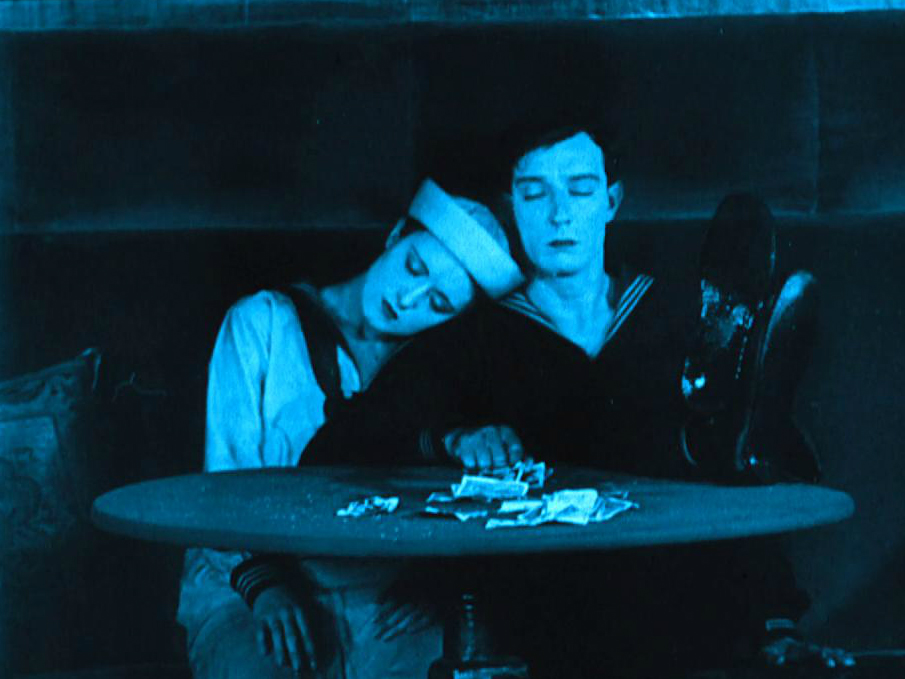
“Now we turn to a masterpiece. In The Navigator Buster Keaton works with practically the same gag as Hope’s duel. Adrift on a ship which he believes is otherwise empty, he drops a lighted cigarette. A girl finds it. She calls out and he hears her; each then tries to find the other. First each walks purposefully down the long, vacant starboard deck, the girl, then Keaton, turning the corner just in time not to see each other. Next time around each of them is trotting briskly, very much in earnest; going at the same pace, they miss each other just the same. Next time around each of them is going like a bat out of hell. Again they miss. Then the camera withdraws to a point ofvantage at the stern, leans its chin in its hand and just watches the whole intricate super structure of the ship as the protagonists stroll, steal and scuttle from level to level, up, down and sidewise, always managing to miss each other by hair’s-breadths, in an enchantingly neat and elaborate piece of timing. There are no subsidiary gags to get laughs in this sequence and there is little loud laughter; merely a quiet and steadily increasing kind of delight.”
James Agee1
“Dans « La croisière du Navigator », la machine, ce n’est pas seulement le grand paquebot par lui-même : c’est le paquebot pris dans une fonction minorante où chacun de ses éléments, destiné à des centaines de personnes, va être adapté à un couple tout seul et démuni. La limite, l’image-limite, est donc l’objet d'une série qui se propose non pas de la franchir ou même de l’atteindre, mais de l’attirer, de la polariser. Par quel système faire cuire un petit œuf dans la marmite énorme? Chez Keaton, la machine ne se définit pas par l’immense, elle implique l’immense, mais en inventant la fonction minorante qui le transforme, grâce à un système ingénieux lui-même machinique prélevé sur la masse des poulies, des fils et des leviers.”
Gilles Deleuze2

